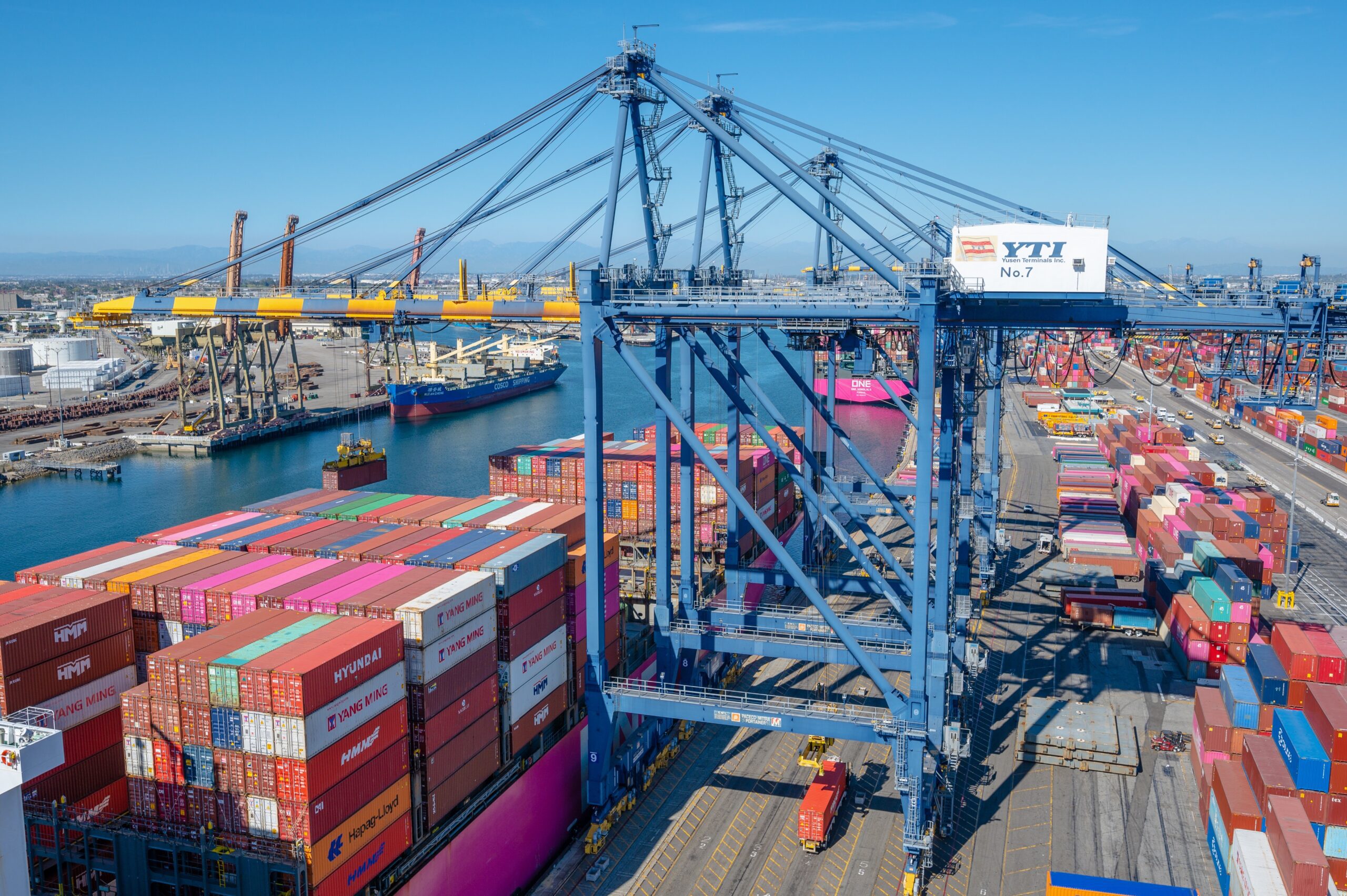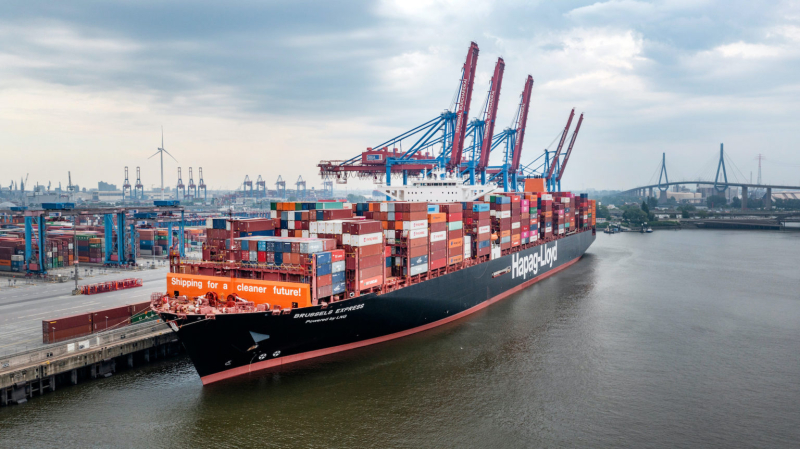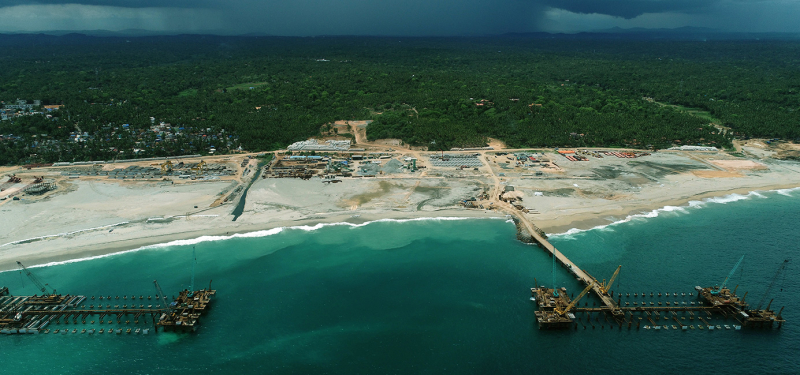
Containership berthed at the Port of Los Angeles.Photo courtesy Port of Los Angeles.
The Port of Los Angeles, despite posting strong first-quarter numbers in 2025, is preparing for a significant downturn in cargo volumes as new tariffs threaten to reshape global maritime trade patterns.
In March, the nation’s busiest container port processed 778,406 Twenty-Foot Equivalent Units (TEUs), showing a 4.7% increase compared to the previous year. The first quarter ended with an impressive 2,504,049 TEUs, maintaining a 5.2% lead over last year’s performance and marking the third busiest first quarter on record for the port.
“Our volume remained strong throughout the first quarter, and we’ve now seen year-over year growth in 18 of the last 20 months,” Port of Los Angeles Executive Director Gene Seroka reported during his monthly media briefing.
However, significant headwinds are on the horizon. March 2025 data revealed concerning trends, as loaded exports dropped 15% from 2024 levels to 122,975 TEUs. This marks the fourth consecutive month of year-over-year decline in exports at the Port of Los Angeles.
Looking ahead, Seroka said projections for April are “promising” with volumes anticipated in the 800,000 TEU range. However, National Retail Federation’s latest Global Port Tracker report paints a sobering picture. May 2025 is expected to end an unprecedented 19-month streak of year-over-year growth, with projected volumes falling to 1.66 million TEU, representing a stark 20.5% decline.
“Importers are bringing in what may be the end of the extra inventory ahead of tariffs, and we could see a drop off in volume starting as early as the month of May,” Seroka said.
The outlook becomes even more challenging moving into summer, with June volumes potentially falling to 1.57 million TEU, marking the lowest level since February 2023. July and August projections indicate further deterioration, with dramatic declines of 27% and 26.8% respectively.
“With tariff and counter tariffs dominating the news, I expect we’ll see cargo decline in the second half of the year at least 10% compared to 2024,” Seroka warned. “That’s because many importers have already brought their goods in early, and as prices begin to rise, consumers will think twice about many purchases.”





























